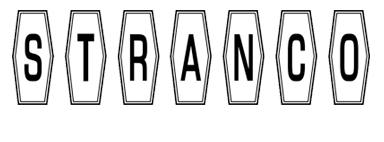Not all too long ago, checkout clerks had to ring up individual items by hand. Then, technology advanced and the world adopted a new checkout standard: barcode labels. While barcode labels are still a vital part of everyday life, people now use self-checkout machines or online shopping to meet their needs. This advanced trajectory raises the question: Where will barcode technology go next?
During the 2008 economic collapse, Digital Journal reported that the manufacturing sector faced an uncertain future. Yet, with the introduction of innovative technology that streamlines and automates certain operations, the manufacturing industry is quickly rebounding day after day. A large part of this growth may be attributed to improved barcode labeling products, printers and applications. Not only have these barcodes cut production times significantly, but they have become the industry-wide standard for storing product information.
It's no secret that barcodes speed up essential processes and minimize human entry error. What is changing about the barcode industry, however, is that this dynamic piece of technology is now being used in ways that were never thought to be possible before. Manufacturing companies are not the only ones benefiting from increased efficiency and accuracy. It is easy to see that the future of barcode technology is extremely bright.
Challenging the very nature of traditional barcode technology
In the highly competitive retail or manufacturing industries, one of the fastest ways to go out of business or to lose touch with a vital consumer base is to not adopt new technology. Holding onto traditional processes will not draw in younger crowds who crave the next generation of operating systems, software solutions and electronic devices. With this in mind, Point of Sale News wrote that one company is using a futuristic approach to improve existing barcode technology.
"Barcodes speed up essential processes."
To do so, the company is getting rid of the barcode altogether – at least to what is perceptible to the naked eye. Channeling digital watermarking technology, the company is embedding key product data into items' packaging graphics. As this information is printed on every bit of the items' labels, checkout workers will be able to scan any side of the product without having to specifically target the traditional barcode graphic.
Japan uses barcode technology to care for its elderly population
One Japanese city is taking innovative barcode technology to the next level by putting labels on their vulnerable elderly populations. According to BBC News, the city is taking care of their elderly populations who suffer from dementia by placing QR barcode labels on their fingernails or toenails. These QR codes are 1cm square stickers that contain key personal information, such as telephone numbers, names and addresses in case they get lost.
These water-resistant stickers are a better alternative to traditional nametags or ID stickers, as they remain attached for an estimated two weeks. This technology allows family members to quickly locate their loved ones should they wander off or go missing. While it is seemingly strange to put barcodes on human beings, Japan reveals that by 2055, 40 percent of the country's population will be 65 or over, making initiatives like this imperative for public safety.
"This checkout-less store is currently in beta-testing mode."
Is it time to say goodbye to grocery store checkout lines?
How would it feel to walk into a store, maybe scan a few items with your smartphone's app and then walk right out the door without ever paying or going through a checkout line? This is the rough concept that Amazon is currently in the process of testing through its Amazon Go initiative, according to GeekWire.
Amazon shoppers will be able to go pick up items from a brick-and-mortar store by gaining access through their smartphone app. There will likely be some sort of barcode technology consumers will scan that will connect to their shopping history on their Amazon account. This checkout-less store is currently in beta-testing mode and not yet open to the public, but is expected to be unveiled in the next year.
"This is just the beginning," Tom Caporaso, CEO of Clarus Commerce, told GeekWire. "Moore's Law says that computing power doubles every 18 to 24 months, and if that law holds, automation will creep into more and more corners of our life, including shopping, employment and more."
At Stranco, we offer long-lasting thermal transfer barcode labels that will remain legible and not fade, even when faced with high temperatures, harsh chemicals and moisture. Instead of risking the efficiency of your entire supply chain, choose our durable barcode labels to meet your specific application needs. Contact one of our knowledgeable representatives today to learn more.

